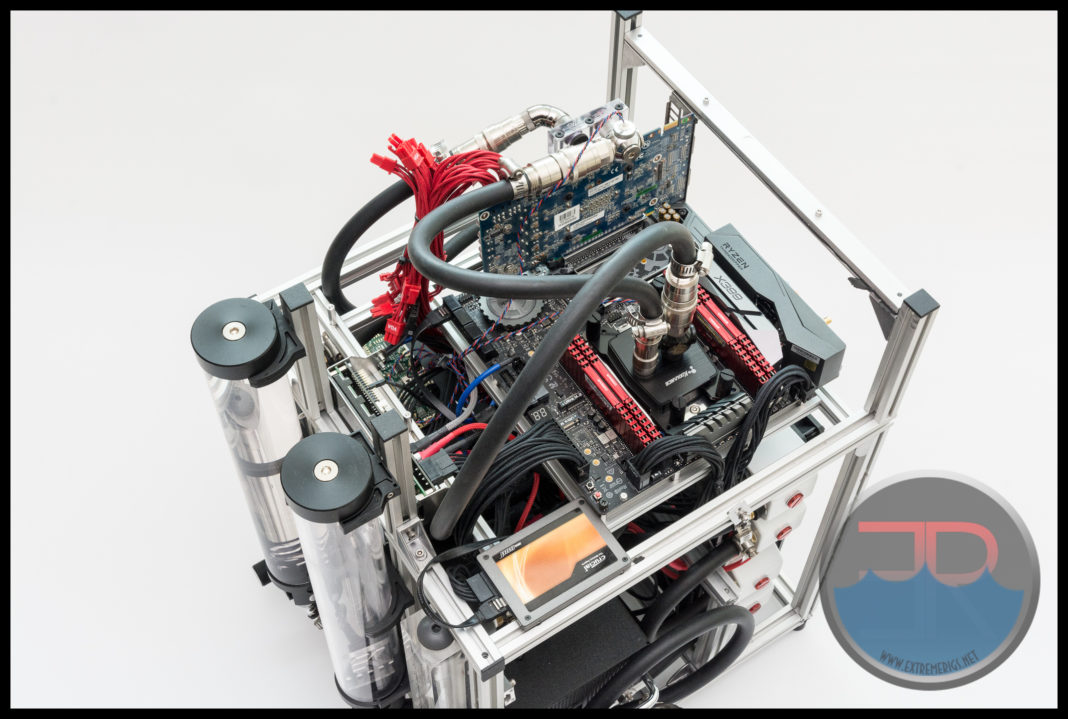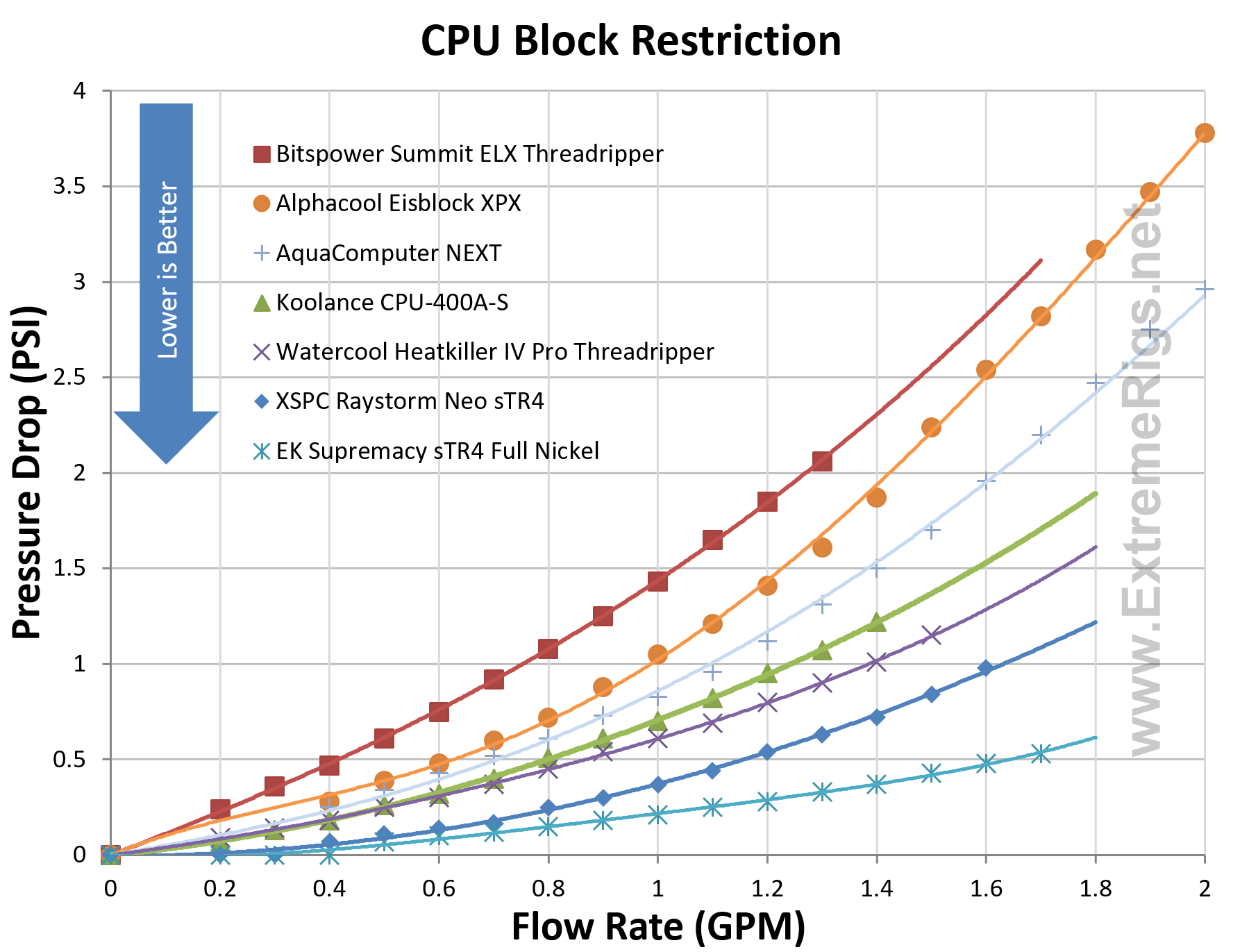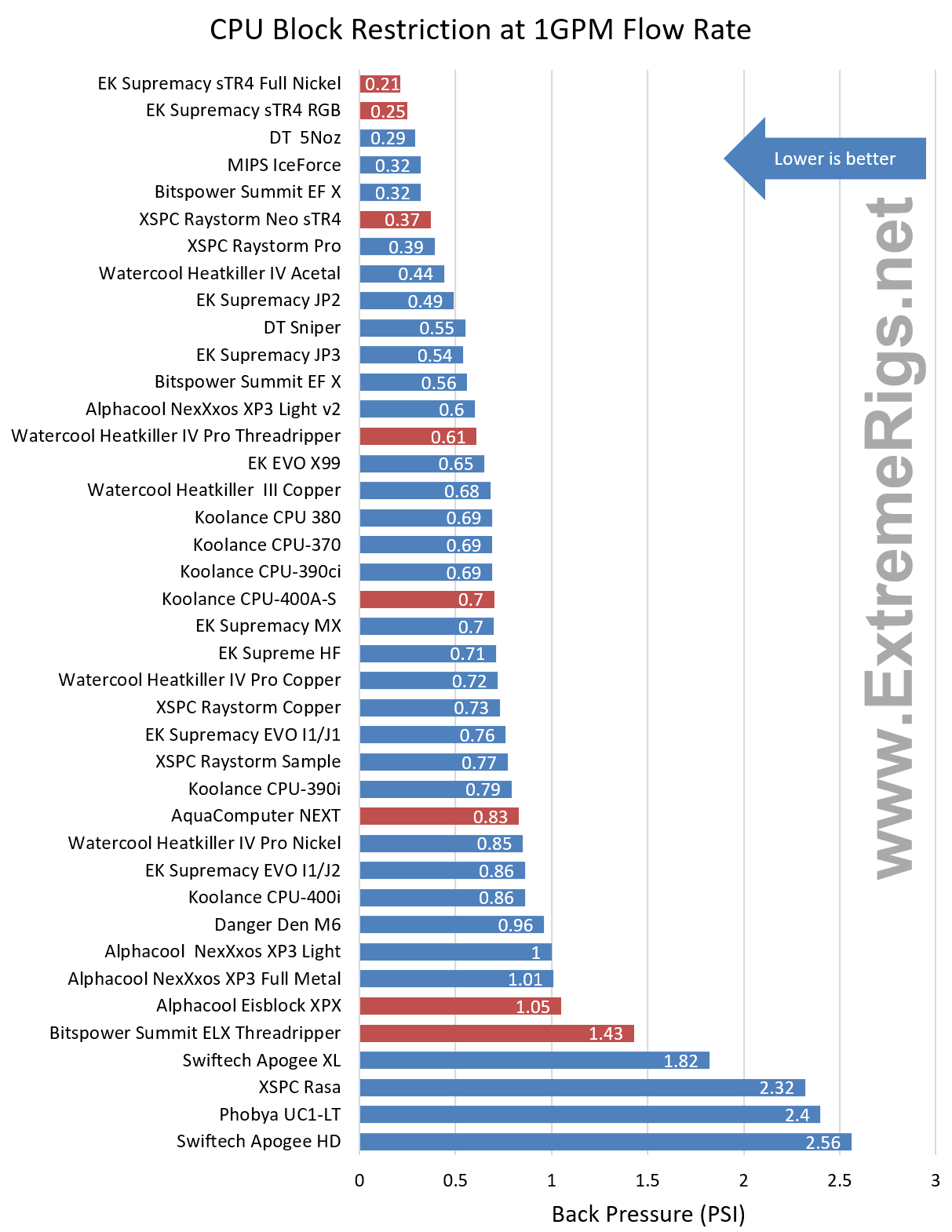Flow Rate Testing aka Restriction
Although we usually think of thermal performance as the be all and end all of cpu block testing, the truth is that there are other factors that we must also consider. If a block is so restrictive that flow rate is affected then you will either have worse thermal performance through out the entire system or you will need to increase pump power and consquently noise.
To measure restriction we vary the flow rate of coolant through a block and measure the pressure difference across the block. For more on this consider reading this article. Unlike previous restriction testing we have a new setup that is more usable in an apartment with no outside space. The flow meter is now more accurate and the pressure meter remains the same. The AquaComputer NEXT block was measured as the same with the new setup and the old setup (within margin of error). It should be noted that the Alphacool Eisblock XPX block did not measure the same as previously. This is because the Eisblock XPX is not user serviceable and changes it’s performance once opened. Therefore we have shown the results *before* the block was opened, under the assumption that if you are buying the block that you understand these conditions and will not open it.
This plot gets a bit busy but gives the full data. Our general rule of thumb for acceptable restriction is to be below 1PSI at 1GPM. Of these blocks, only the Bitspower is really noticeably above this. This is surprising as previous Bitspower designs are usually quite low in restriction. Also noticeable is just how low restriction some of the blocks are. It’s rare to see blocks below 0.5PSI at 1GPM, but here we have two – the XPSC is around 0.4PSI and the EK is a staggeringly low 0.2PSI. While low restriction is generally a positive thing, when it’s as low as 0.2PSI you have to wonder if EK are giving up thermal performance in order to achieve such a low number. Of course the real question is whether this is intentional or a sign of accidental “blow by” fluid flow skipping past the jetplate where it isn’t fully sealed.
Comparing the 1GPM data points (red) against every CPU block we’ve ever tested (blue) we see that the Threadripper blocks are distributed fairly evenly:
In other words, none particularly stand out beyond the EK block which recorded the lowest restriction ever measured. Note that the DT5Noz used 5 parallel jetplates to record such a low restriction, while the MIPS used a matrix structure to have many more effective mini jetplates.
Let’s finally now look at the thermal results.














Awesome reviews and love how detailed and simple the articles are, it really helps a lot when coming in choosing different parts which I am currently building, and I am glad I have chosen heatkiller too, athou I am a little worried about the acrylic version overtime while 2990 is in OC status (hot stuff..). fingers crossed.
Comments are closed.